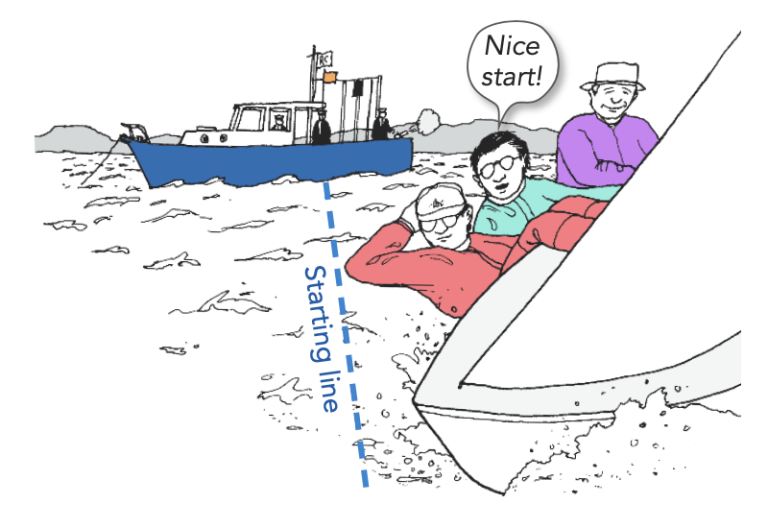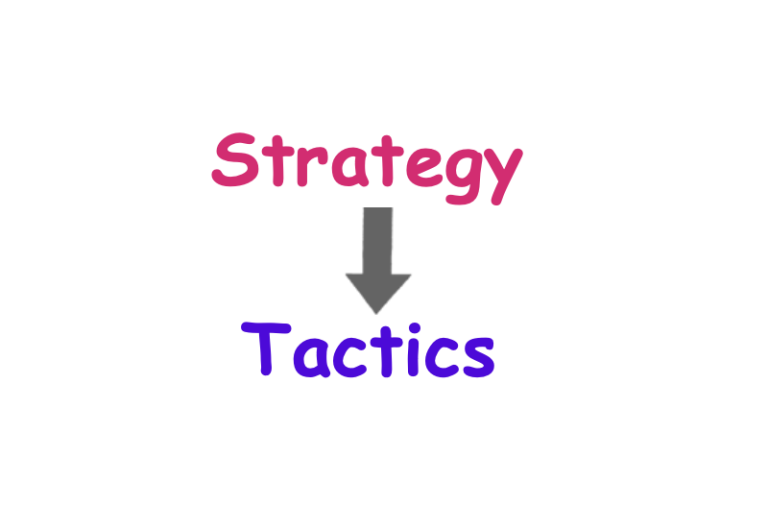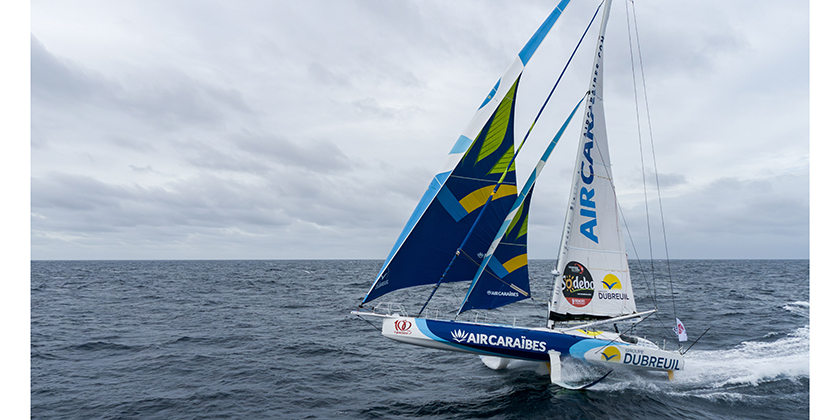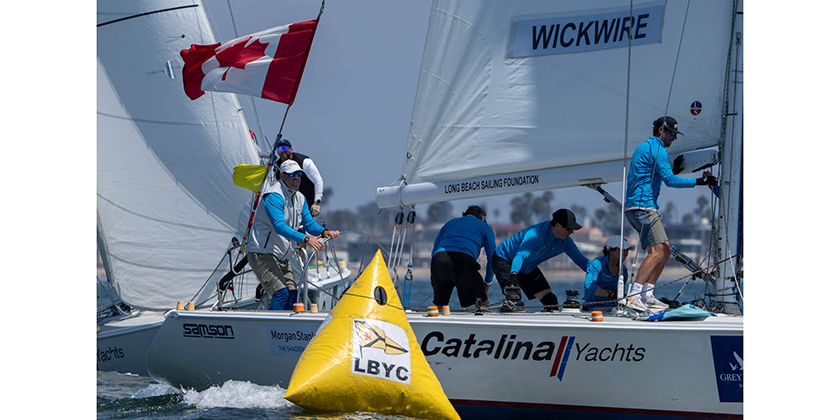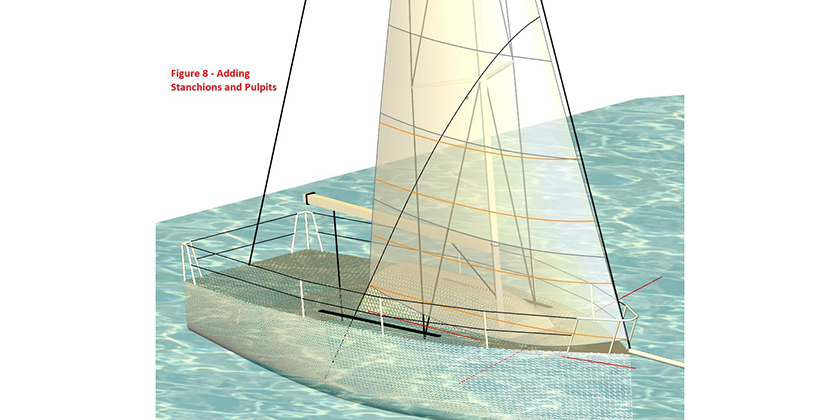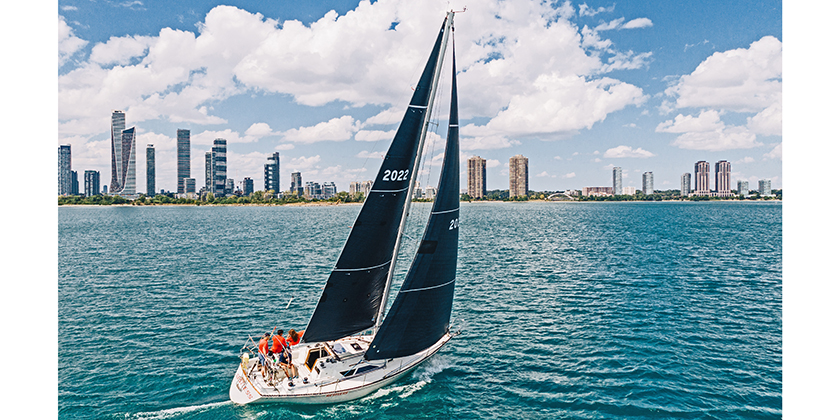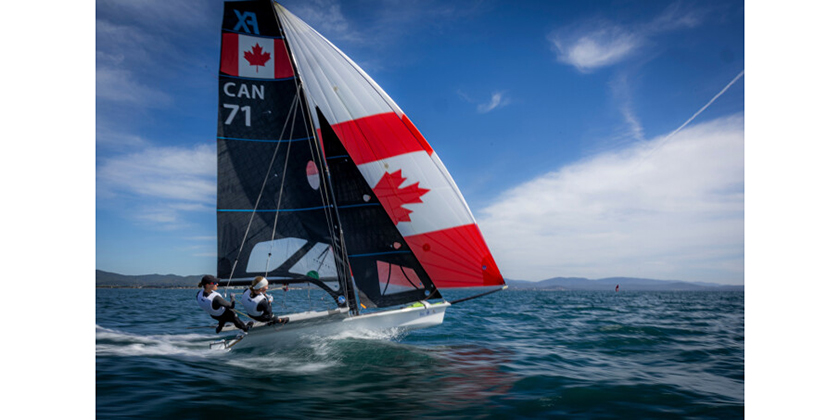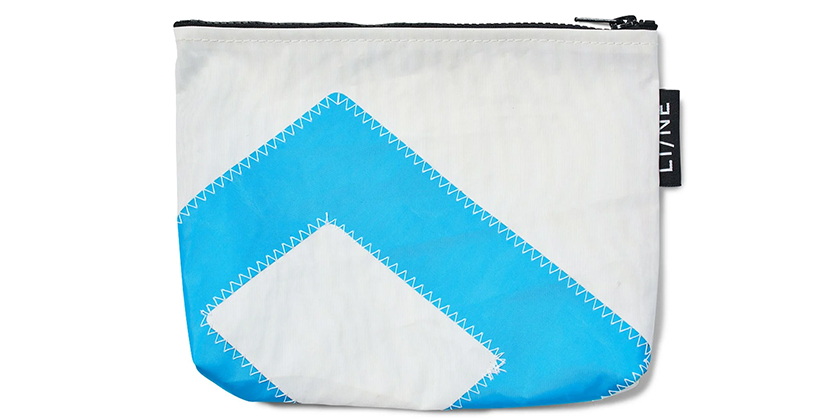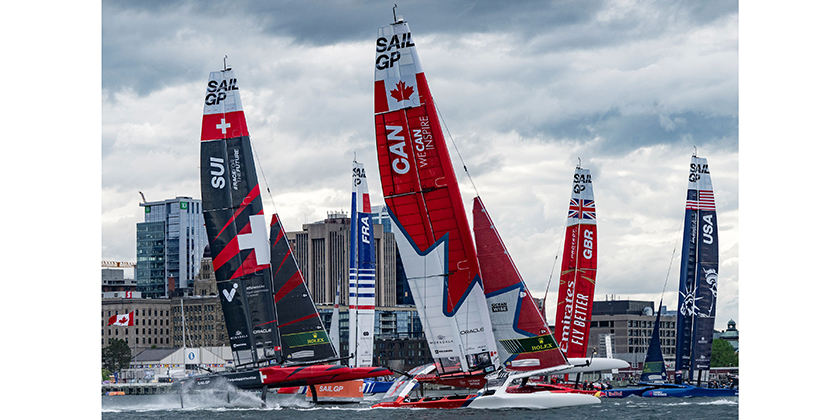Speed & Smarts – Risk: A Racing Sailor’s Curse
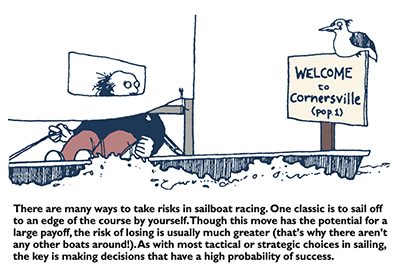
May 4, 2022
One definition of risk is ‘exposure to the possibility of loss.’ That basically sums it up for sailboat racers. When you take a risk, you are accepting the chance that you will lose something you have – boats, time, you’re standing in the series, a chance to catch up, etc.
In the perfect world, sailors would not take any risks at all. Ideally, we would always know what the wind is going to do, and there- fore we would go the right way on every leg without any risk of losing.
But the race course is not perfect. Since we will never know exactly what’s going to happen (and that makes the sport interesting), every move or decision we make on the race course involves a certain level of risk. For example, if you start near the pin end the risk is that the wind will shift right. If you get too far to one side of the beat or run, there may be more pressure on the other side, and so on.
One thing that separates good sailors from average sailors is their ability to manage risk. As a general rule, good sailors don’t take much risk. They do a great job of figuring out what the wind will do, and when they’re not sure they use rules of thumb to put themselves into positions that always seem to minimize their exposure to risk.
Rules of thumb are very helpful in reducing risk because they have historically had a high probability of success. They also help you be more consistent by improving the quality of your decision-making. They allow you to choose tactical and strategic options that have a good chance of working, while minimizing risk at the same time.
The reason to reduce risk is so your series score will include good races over and over again. The best way to do this is usually not by trying to win any particular race. In many races, the boat that crosses the finish line first had to take a lot of risk to get there. It’s great to win, but not if you had a 50-50 chance of winning or getting 20th!
How much risk to take
Risk by itself is not necessarily bad or good. Though it’s smart to avoid risk much of the time, there are many situations where you might choose to take small, or even big, risks. The key is knowing when and where to do this. Here are some risk-related factors to consider:
Timing – Is it early or late in the race/series? Generally, you should be less willing to take risks early on since you have the entire race or series to improve your position. As you get closer to the finish, how- ever, and you are running out of time, you might be willing to take bigger risks.
Happy or not happy? – Are you satisfied with your position in the race or series? If so, protect what you have and avoid taking risks. If you are not happy, that’s when you might consider taking more risk to improve your standing.
Strategic confidence – How comfortable are you with the strategic information you have gathered and the game plan you have made? If your confidence is high, you have little need to take risks. If you’re not sure what the wind will do next, you will probably end up having to take a bit more risk.
Boatspeed – Are you faster or slower than the other boats in your fleet? If your speed is good, you don’t need to take risks to get to the front of the fleet – just stay near the other boats. If you’re off the pace, you may need to take some strategic risks to compensate.
Size of the ‘reward’ – If you make a risky move, how much could lose or gain? If the gain/loss ratio is high, this might be a risk worth taking. But if you risk losing 20 boats for a possible gain of five boats, that is probably not a worthwhile option.
Try to consider all these factors when you are racing and making decisions that involve risk. Taking risks is not so bad when you take them consciously as part of a planned strategy. But many times, decisions involving risk are made spontaneously, or subconsciously, without much thought.
For example, you are sailing upwind on port tack, headed to the favored right side. Suddenly one of your competitors tacks on your wind. Instead of footing off to keep going right, you tack to starboard, but it takes several minutes to find another lane of clear air on port tack. A small incident has just grown into a huge, unplanned risk.
If you are going to take a risk, at least do it consciously as part of your overall plan for the race.
How to minimize risk-taking
As a rule of thumb, you should generally take as few risks as possible. Focus on things you can do to improve your performance that involve no risk at all. These include working on boatspeed, improving your boat handling and avoiding break- downs. All of these things are no- brainers because they have an up-side with no down-side.
Unfortunately, there is no free lunch when it comes to strategy and tactics. So, if you don’t have a clear strategic plan, rely on the rules of thumb in this issue to help you reduce risk, be consistent and improve your chances of success.
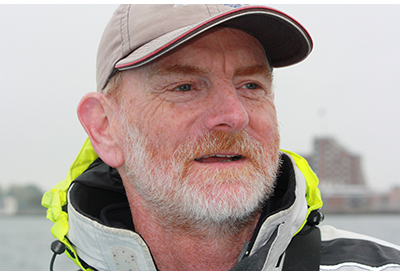 Dave Dellenbaugh is the publisher, editor and author of Speed & Smarts, the racing newsletter. He was the tactician and starting helmsman on America3 during her successful defense of the America’s Cup in 1992 and sailed in three other America’s Cup campaigns from 1986 to 2007. David is also two-time winner of the Canada’s Cup, a Lightning world champion, two-time Congressional Cup winner, seven-time Thistle national champion, three-time Prince of Wales U.S. match racing champion and past winner of the U.S. Team Racing Championship for the Hinman Trophy. He is currently a member of the US Sailing Racing Rules Committee (and was its chairman from 2005-2008).
Dave Dellenbaugh is the publisher, editor and author of Speed & Smarts, the racing newsletter. He was the tactician and starting helmsman on America3 during her successful defense of the America’s Cup in 1992 and sailed in three other America’s Cup campaigns from 1986 to 2007. David is also two-time winner of the Canada’s Cup, a Lightning world champion, two-time Congressional Cup winner, seven-time Thistle national champion, three-time Prince of Wales U.S. match racing champion and past winner of the U.S. Team Racing Championship for the Hinman Trophy. He is currently a member of the US Sailing Racing Rules Committee (and was its chairman from 2005-2008).
You can subscribe to the Speed & Smarts newsletter HERE.

